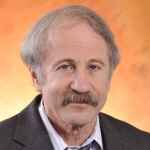Dr. Thomas Szasz and Invalid Theories of Violence in Today’s Violent America
George F. Will has recently written a provocative column on current words and phrases which are overused, misapplied and mislead audiences into believing they are saying something meaningful when they are not.
The phrase that would best fit Will’s description of a belief that one is saying something meaningful when they are not is “mental illness.”
No phrase has a longer history of misdirection, misapplication and meaninglessness than “mental illness.”
This may be the propitious time to bring up the theories of my late friend and mentor, psychiatrist Dr. Thomas Szasz, whose fame through his scores of books and endless articles, lectures and media appearances came from his view that mental illness is a myth. This does not mean that the behaviors described as psychopathic, mentally ill, demented, etc., do not exist — they do.
I was a friend, admirer and sometimes a scholarly associate of Szasz.
In his classic work, “The Myth of Mental Illness: Foundations of a Theory of Personal Conduct,” Szasz argued that “mental illness” is a metaphor, that the mind is not an organ and therefore could not be diseased. People bought into the myths of mental illness for multitudinous reasons, including that mental illnesses are diagnosed by medical doctors, those suffering from mental illness often go to hospitals, and they are treated with psychoactive drugs that are euphemistically called “medicines.” Unlike real illnesses, there is no way — no blood test or X-ray, for example — to disprove or disconfirm a diagnosis of “mental illness.”
Most average Americans would respond that if Szasz had met x, y and z crazy person or read about, say, what President Donald Trump — and surely millions of others — terms the “Senseless Violence by a Crazed Lunatic” who slaughtered 5 people in a midtown Manhattan office building, he would be convinced otherwise.
As is usually the case, that murderer is said by officials to have a “documented mental health history.” What the de rigueur description of “history of mental illness” of society’s unfit citizens means is that they have sought out psychiatric help or received counseling or any other part of the above-described symbolic actions of mental illness, its diagnoses, its care and/or its punishments or therapies.
But this piece is not about a particular event; it is about the ubiquity in public discourse of mental illness being the cause of every violent, unusual and/or simply off-putting-to-the-observer action of those who are the subject of official or unofficial actions or thoughts.
Deriding and disparaging people you dislike, or for whom you have contempt, with the rhetoric of mental illness is an equal opportunity method of persuasion: It is used by the far right, conservatives, far left, liberals — everyone.
Who can be described as being “mentally ill?” Criminals, especially but not exclusively, those who plead insanity, office-holders, irritating people, you and I — anybody.
And, of course, President Trump is regularly seen as mentally ill, because some people despise him and feel good and retributive by calling him “sick.”
What percentage of people are mentally ill?
It depends on what your source is and sometimes when you research it.
According to the National Institute of Mental Health (NIMH), “In 2022…[the number of people with mental illness was] 23.1% of all U.S. adults”
According to Harvard Medical School, “One out of every two people in the world will develop a mental health disorder in their lifetime.”
In the early 2000s, there was a movement to increase the estimates of those suffering from mental illness to over 50% of the population. Then, responsible psychiatrists like Paul R. McHugh, former Psychiatrist-in-Chief at Johns Hopkins University, demurred with derision, “Fifty percent of Americans mentally impaired — are you kidding me?”
Of course, different estimates have different numbers for children’s mental illnesses and different definitions, including conscious choices such as drug usage and/or school maladaptation and disruptive behaviors and inattention, etc.
Szasz argued tirelessly that the human condition entails avoidable and unavoidable choices and the endless excuses for behavior — including mental illnesses and hyperactivity — are endlessly employed by humans to forgive or ameliorate responsibility for actions.
Szasz supported, as do I, eliminating the insanity plea, supporting voluntary counselling without psychological or psychiatric mystification, except for some brain-diseased-affected actions (such as some schizophrenias), as human choices for which said actors are responsible.
Holding people responsible and accountable is the first step toward incentivizing self-control of behavior and disincentivizing the “mental health” excuse.

Richard E. Vatz https://wp.towson.edu/vatz/ is a Distinguished Professor Emeritus of political rhetoric at Towson University and author of The Only Authentic of Persuasion: the Agenda-Spin Model (Bookwrights House, 2024) and over 200 other works, essays, lectures, and op-eds. He is the benefactor of the Richard E. Vatz Best Debater Award at Towson. The Van Bokkelen Auditorium at Towson University has been named after him.

